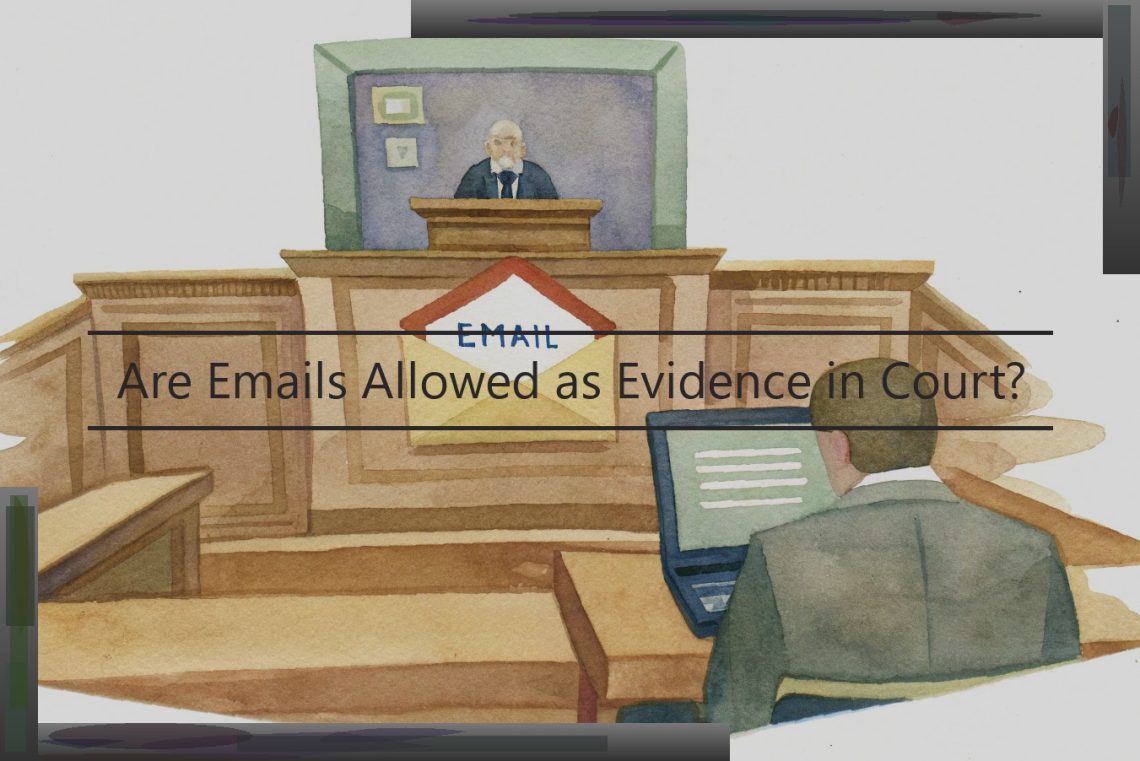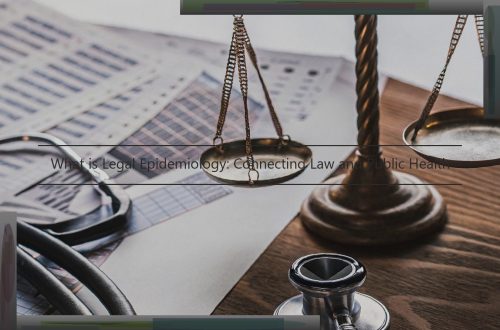
Are Emails Allowed as Evidence in Court?
Email Evidence 101
Email is now a crucial part of modern communication. Social media, online chats, even over-the-top messaging apps are all still secondary to the good ol’ electronic mail when it comes to formal written communication. Since so much use is made of email, it naturally follows that it comes up a lot in legal proceedings as well. The technicalities of how evidence is handled in a case can be a daunting problem, but in a nutshell, all it takes for an email to be admissible is that it represents a form of communication and it relates to the subject matter of the case at hand. Relevant emails are those that contain information directly relating to the claims of either party, or in any way make it possible to corroborate or contradict those claims.
Some examples of the use of email evidence in court include the following: Here, an email was presented as proof of non-delivery of a motion to strike. Even though the attorney handling the motion was out of town at the time , the court ruled that it was unreasonable to plan so far in advance and that mailing of a hard copy would still normally have been in order, so the judge held that the other side should have received due notice of the motion and allowed the case to move ahead. In this one, the plaintiff had a friend and co-worker at their workplace who had a picture of the plaintiff along with questionable materials on their desk. The plaintiff used this coworker’s email address to send this picture to the company as evidence, except he accidentally sent it to human resources instead. That picture was used in court as evidence anyway when the HR department printed it out for the court. There are many other such cases where email evidence was used in court, with the overwhelming offenders being emails related to employment situations or marital disputes.
When Are Emails Admissible in Court?
The legal framework for the admissibility of email in court is generally governed by rules of evidence that require every piece of evidence to be relevant, reliable and properly authenticated to be admitted. Evidence is relevant if it has the power to prove or disprove something in the case. It is reliable when it meets the standards established by the court for the kind of evidence that will be considered reliable. If it is not reliable then it is inadmissible. Authentication is the legal process where a party makes a preliminary showing that the proffered evidence is what it purports to be.
The rules of evidence are both statutory and rule-based, and have been enacted at both the state and federal level. Thus, each state has its own evidence code as do the Federal Rules of Evidence. Because of the differences in the wording of the code sections and the somewhat differing interpretations of the law by the state and federal courts, it is imperative to consult the law of your jurisdiction and the facts of your case to determine the rules that apply to the admissibility of email evidence.
The Federal Rules of Evidence are codified at 28 U.S.Code Appendix. The relevant rules are set forth below.
According to the Advisory Committee Notes to Rule 901, there are two types of authentication that allow a document to "speak for itself." The first is by testimony of a witness with knowledge that a matter is what it is claimed to be, or a second way is by comparison by the trier of fact or by another [expert] witness against a specimen.
According to the Advisory Committee Notes to Rule 902, emails may be authenticated under the following rules:
If a document is self-authenticating, no extrinsic evidence is required to prove it is what it purports to be.
Proving Emails Are Authentic in Court
In the past, it has been more difficult to establish the admissibility of e-mails into testimony and before the court, than it has been to admit regular paper documents. As a result, and in order to permit courts to more easily accept e-mails into evidence, courts like the Federal Rules of Evidence 901 were amended in 2000 to clarify and more closely tie e-mail messages to standard processes used to establish the admissibility of traditional documentary evidence.
Rule 901(b) of the Federal Rules of Evidence sets forth the following categories of evidence and testimony that may be used to authenticate e-mail messages and other documentary evidence for purposes of admissibility:
- (1) Testimony of a witness with knowledge. – Testimony that a matter is what it claims to be.
- (2) Nonexpert testimony about handwriting. – For a comparison, a layperson’s opinion is enough.
- (3) Comparison by an expert witness or the trier of fact. – For a comparison, the opinion is enough, if based on a dependable comparison.
- (4) Distinctive characteristics and the like. – Items have distinctive characteristics, including their appearance, contents, substance, internal patterns, or other distinctive characteristics.
- (5) Opinion about a voice or a speaker. – An expert witness may testify to identify a voice, whether heard firsthand or through transmission or recording.
- (6) Evidence about a telephone conversation. – A speaker’s identity may be established by the recipient’s testimony.
- (7) Evidence about a public record. – The authenticity of a public record can be established by calling a custodian or another qualified witness to testify.
- (8) Evidence about a process or system. – The authentication of an electronic system used to generate or transmit information, may be proven by testimony or a certification.
Federal Rule 901 (b)(9) specifically addresses the admissibility of e-mails as follows:
(9) Evidence describing a process or system to produce a result, and applying it to demonstrate the authenticity of the item. Example: A defendant authenticated a tape recording of his conversation with a police officer in which he admitted to committing a crime by showing how it was created, introducing the tape and demonstrating that it the tape accurately represented the conversation in question.
Difficulties with Introducing Emails into Evidence
While emails can be powerful tools in the courtroom, there are also significant challenges and limitations that must be considered when attempts are made to introduce them as court evidence. Privacy issues are at the forefront of email challenges and limitations. Even with the increased demand for litigation support and court readiness, an attorney may not have access to email communications as evidence unless the relevant parties give their consent. An employer may argue that employee emails do not have to be turned over due to the employer’s privacy interests. Alternatively, a spouse may argue that email evidence should not be covered by some form of spousal or marital privilege. Another challenge involves hearsay objections against email evidence. Email evidence can be classified as double or triple hearsay (which is prohibited in court) . Double hearsay refers to a statement that relays the contents of a statement made by someone who is not in court. Triple hearsay contains another level of hearsay beyond a second statement. The potential for tampering can also present challenges when it comes to the admissibility of email evidence. Whether used as discovery evidence or court evidence, emails are open to being doctored, forged, or fabricated. An opposing party can alter the contents of an email or cover up forged email communication through routing and untraceable servers. Faulty authentication can throw email communication out of court. Without proper authentication, emails are likely to be excluded from court based on the lack of proof that the email evidence is true and not manipulated. It is the responsibility of the presenting party to authenticate their emails with reliable sources.
Email Evidence Best Practices
Because the reliance on email in business communications is so heavy, it is often necessary to use these messages as evidence in court. Following best practices when archiving and presenting emails as evidence is of the utmost importance to ensure that the information drawn from them is credible and accepted by the court.
The best way to preserve email is by exporting it in the format in which it was received. Usually, this means printing the document directly in color on letter-sized paper. Griping whole documents lets the court see the entire thread of the conversation.
Be sure to file away these documents in an organized manner. Organize them by date, sender, recipient, and topic, so that they can be easily found when needed. If these documents need to be obtained from a separate source, such as outside legal counsel, inform the outside source on the best way to present the information.
When emailing information, don’t take the lazy way out by not including emails about the case. The client (or opposing counsel) will want to see past correspondence, so when forwarding emails, be sure to copy the full thread.
Furthermore, avoid sending information through other methods whenever possible. Text messages and messaging services are much more difficult to document and organize than email, since they are typically only stored until deleted.
Document the method used to obtain the information and keep a log of who has access to it, as well. If another party has access to your email, they may change information in it without your knowledge. Use a "seen" feature or record when you opened a message to prove it hasn’t been changed after reading it. Be sure to highlight the important portions of emails to show others exactly where it is that supports your argument.
Enlist the help of an attorney early on to ensure that email evidence will be used properly. An attorney will also be able to get an expert who is familiar with the technology. This expert will be able to present the information to the court in a way that should be 100 percent admissible.
Cases of Note Regarding Email Evidence
The utility of emails as evidence in court was adjudicated in some high-profile cases:
The 2001 case of In re Yahoo! Inc. Customer Data Security Breach Litigation, No. 5:20-cv-03056-LHK, 2022 U.S. Dist. LEXIS 54045, 2022 WL 1027361 (N.D. Cal. Apr. 6, 2022)
In Yahoo! Inc.’s security breach that left at least 3 billion users’ accounts exposed, many emails were included in the backgrounds of the identities that were stolen. Plaintiffs cited hidden message identifiers in emails to support their claims against Yahoo! Inc. because the metadata could face serious alterations or manipulations if forward. For example, in a forward, the sender’s original IDs are stripped and replaced by the fwd: prefix and "On DATE, NAME wrote:" text is added before the email itself begins. Yahoo! argued that it couldn’t see the raw metadata in the regular messages, and that the code would be the only way to prove that the ID exists. the court agreed with Yahoo! Inc. on this and didn’t divulge the emails, thus upholding the privacy.
The 2007 case of Terse v. Am. Coll. of Obstetricians & Gynecologists, No. 1:05-cv-00491, 2007 U.S. Dist. LEXIS 1285, 2007 WL 165033 (D. Utah Jan. 17 , 2007)
Plaintiff at the American College of Obstetricians & Gynecologists charged that her employers violated her rights and ended her employment due to her disability. Plaintiff included an email from a colleague that described defendants’ anti-female behavior in a "clear" way as evidence. After analysis, the court found the email to be hearsay and not admissible.
The 2010 case of United States v. Traficant, 419 F.3d 594 (6th Cir. 2005), cert. denied, 546 U.S. 1137 (2006)
Representative Traficant was investigated for bribery, corruption, racketeering, etc. In Traficant’s case, the court ruled that the government did not unreasonably delay its investigation into Traficant’s alleged criminal activity. The court held that the government could use emails provided to them by sources outside of the government, even when the government had not given them consent.
The 2012 case of Klein v. Fed. Ins. Co., 770 F.3d 689 (3d Cir. 2014)
The parties in this case filed against Federal Insurance Company when they didn’t pay out in an insurance policy. The parties tried to submit emails as evidence, but the court ruled that the error rate of the program affected the value of the email to the court, thus ruling that the emails should be maintained under FRCP 902(11).




